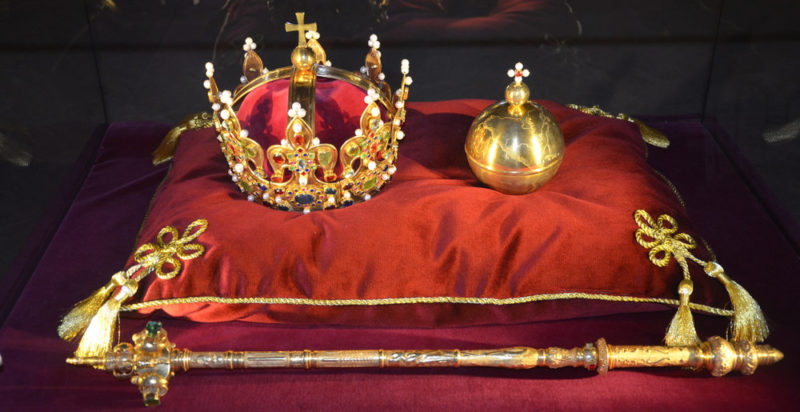We explain what a parliamentary monarchy is, its origin, characteristics and examples. Also, the constitutional monarchy.
What is a parliamentary monarchy?
The parliamentary monarchy is a form of government in which the king or monarch fulfills the function of head of state , a position that is inherited by blood lineage. The legislative power is regulated by a parliament made up of elected officials and the executive power is regulated by the government, unlike an absolute monarchy in which there is no division of powers, but all fall to the king.
In the parliamentary monarchy, the king is the one who reigns but does not govern ; he has the power to moderate the functioning of democratic institutions and diplomatic affairs. Despite the limitations in the exercise of his power, he enjoys privileges, such as the income of the royal family, his home, his security and even legal immunity.
Origin of the parliamentary monarchy
The parliamentary monarchy arose gradually and was gestating, in principle, in the United Kingdom during the Middle Ages , between the 5th and 15th centuries, with the first attempts to limit the role of the absolute monarch.
The Parliament of England was formed under the legislature of the Kingdom of England and remained in force between 1300 and 1700. Then an alliance between England and Scotland was formed, and the Parliament of Great Britain was formed.
Characteristics of the parliamentary monarchy
The parliamentary monarchy is characterized by:
- Be a form of government with a representative system .
- Have a king with the function of being head of state and representative in diplomatic matters.
- Have a monarch or king who obtains the position in a hereditary way .
- Having a king who is the one who reigns, but does not rule, because he is controlled by the other powers of the State .
- Have an executive power that is exercised by the government or elected authorities .
- Have a legislative power that is exercised by the parliament .
Parliamentary and constitutional monarchy

Depending on the type of monarchy, the powers and powers exercised by the king vary. The difference between the parliamentary and the constitutional monarchy is that in the constitutional monarchy the king fulfills the following functions:
- He is head of state.
- He is in command of the executive branch .
- Appoints the government .
- It does not exercise control over the legislative branch.
Constitutional monarchy
The constitutional monarchy arose from the French Constitution of 1791 and later it was applied in various countries of Europe . In this type of monarchy, the king had authority in the head of state and in the executive power, but it was the people who, through an assembly of representatives, controlled the legislative power.It resulted in a transition from the absolutist form of government to a more democratic one that recognized the rights and freedoms of citizens. In this way, the first European republics emerged , such as France, which has a semi-presidential republic system in which the president, together with the prime minister and the cabinet, are responsible to the state legislature.
At present, the term "parliamentary monarchy" is not used frequently, but rather "democratic monarchy" is used as a broader concept that designates the political system in which the powers of the hereditary monarchy are limited by popular sovereignty. The parliamentary monarchy is used to designate the parliament that exercises the legislative and financial powers of the government.
More in: Constitutional monarchy
Examples of parliamentary monarchies
 Some countries that use parliamentary monarchies as a system of government are:
Some countries that use parliamentary monarchies as a system of government are:
- Belgium , with King Felipe Leopoldo Luis María and Queen Matilde d'Udekem.
- Denmark , with Queen Margaret II.
- Spain , with King Felipe VI and Queen Letizia Ortiz.
- Great Britain and Northern Ireland , with Queen Elizabeth II and King Philip of Edinburgh.
- The Netherlands , with King William Alexander and Queen Máxima Zorreguieta.
- Sweden , with King Carlos XVI Gustav and Queen Silvia Renate Sommerlath.
- Monaco , with Prince Albert II and Princess Charlene Wittstock.
The above content published at Collaborative Research Group is for informational and educational purposes only and has been developed by referring reliable sources and recommendations from technology experts. We do not have any contact with official entities nor do we intend to replace the information that they emit.
MA student of the TransAtlantic Masters program at UNC-Chapel Hill. Political Science with a focus on European Studies. Expressed ideas are open to revision. He not only covers Technical articles but also has skills in the fields of SEO, graphics, web development and coding. .
Leave a reply
Your email address will not be published. Required fields are marked *Recent post

Sport: What Is It, Types, Risks, Features, Characteristics and Examples

Dogs: Emergence, Features, Characteristics, Feeding and Breeds

Story: Definition, Elements, Structure, Features and Characteristics

